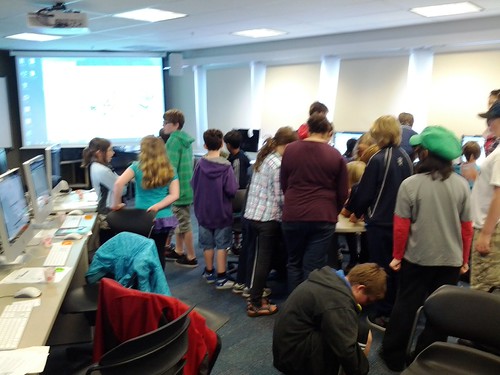Earlier this week Mozilla announced that it was stepping away from developing Persona and will be transitioning the project to community ownership. Persona is a federated single sign-on identity project that Mozilla has been developing. It is used for a number of Mozilla projects, including Webmaker and Backpack.
Chances are, if you have ever earned an open badge, then you probably have a Persona account. More specifically, if you have ever stored that earned open badge in Mozilla’s Backpack, then you have a Persona account since Backpack requires users to have a Persona account. It is the authentication service that powers Backpack. Which makes me wonder how Mozilla’s retreat from Persona (the reasons frankly outlined in a Mozilla wiki page and an even more frank Hacker News conversation) may affect Backpack and, by extension, Open Badges.
Not that Open Badges per se needs Mozilla’s Backpack or Persona to work. The entire Open Badges Infrastructure (OBI) is open source and can be rolled out by anyone. But Backpack is the most high profile proof of concept implementation of a badge repository that I know of. Mozilla itself refers to Backpack as the “reference implementation of a Backpack and serves as a framework for badge repositories.” So to have a project that serves as a framework for other “backpack” like projects potentially undergo a change to something so fundamental to its purpose – as identity management is to badges – feels significant.
It may not be. I’m new to this Badges game and am just getting up to speed on the infrastructure for an internal sandbox project we are doing here at BCcampus. But in my research around backpack-like providers, I’m not finding much. And the idea of federated backpacks still seems nascent. I am not seeing a lot of open backpack projects similar to Mozilla’s Backpack, although the release earlier this week of BadgeKit might help accelerate the proliferation of backpacks and we may see the federated backpack approach take off. Federated backpacks have been called the holy grail of open badges where distributed backpacks hosted in multiple locations by multiple organizations could connect & share badge information. But in order for that to happen, those backpacks have to exist. Organizations and groups have to commit to hosting backpacks of their own (and indeed there has been a call for more open backpacks by the Open Badges community). There are people like Peter Rawsthorne who believe that, in order for those other open backpacks to flourish and for the federated backpack idea to gain traction, Mozilla may want to consider getting out of hosting a backpack altogether:
I believe the day when Mozilla could sever its responsibility from hosting an OBI instance is the beginning of when the OBI could truly be released into the public domain.This is also the day when other instances of the OBI are up and running and all these instances openly exchange information about the badges they contain. They become a federation of Open Badges Infrastructure (OBI) instances; or in other words, the federated backpack. This would also mean that Mozilla would no longer have to host an OBI instance and could focus more deeply on making the OBI code base rock solid and continue advocating for an open metadata standard for the digital badge.
Maybe Mozilla Backpack will transition to another authentication service, or maybe we are seeing the start of Peter’s vision happen and Mozilla begins to pull back from hosted services like Backpack. After all, the proof of concept has been done and it works. Or maybe Mozilla Backpack will continue to use some sort of scaled down, community driven Persona service, although with the number of identity management systems and schemes in existence already it is hard to see where the driver for another is coming from.
All in all, the transition of Persona to “community ownership” feels a bit like a Hail Mary pass. If those who have the most invested in the system (Mozilla) are backing away, then it is hard to see who might step up to fill the development shoes without there being a real, compelling need by someone for the service. It feels like Persona is faltering, and that leaves me wondering about the future of the flagship of digital badge repositories, Backpack.











